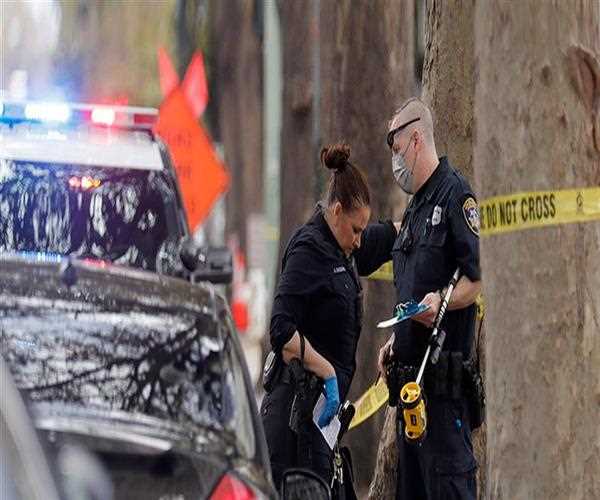Search here

19-Feb-2023
How are violent crime rates in U.S. cities affected by poverty
Playing text to speech
Poverty is a major issue in the United States, and it has been for decades. What many don’t realize is that poverty is linked to more serious issues like violent crime. In fact, it’s not just poverty that plays a role—there are other factors like race and education that also contribute to this reality. In this view, we will explore how poverty plays into violent crime rates in U.S. cities.
We’ll look at the statistics behind this important issue, the reasons why it exists, and what can be done to address it. By understanding the complexities of poverty and violence, we can start to work toward solutions that make our cities safer places to live in.
In 2018, there were 369 violent crimes per 100,000 people in the United States, which is nearly the lowest rate in more than three decades. John Roman, a senior fellow with the independent social research organization NORC at the University of Chicago, explained in an interview with 24/7 Wall St. that the most recent crime statistics show an encouraging continuation of a long-term trend.
Roman stated, "You have never been safer than you are now if you are under the age of 40."
Naturally, crime is a local issue. Some U.S. cities have violent crime rates that are more than double the national peak of 758 incidents per 100,000 people in 1991, despite the overall decline in violence. 24/7 Wall St. looked at violent crime rates, which are population-adjusted measures of rape, robbery, homicide, and aggravated assault, using data from the FBI to identify the most dangerous cities in America. The FBI's 294 midsize and large cities with populations of at least 100,000 were the only ones taken into consideration.
The decline of American manufacturing has affected cities in Indiana, Michigan, and Ohio, all of which now have some of the highest rates of crime in the country. Even though manufacturing is making a comeback in a few cities across the country, cities like Detroit, Indianapolis, and Cleveland—all of which are on this list—probably will never be able to rely on it as much as they once did.
It is essential to keep in mind that just because a city has a high rate of violent crime does not mean that the city as a whole is unsafe. Violence is extremely local, even within a given city.
City wise facts
- With fewer than 200,000 people, Shreveport, a relatively small city in northern Louisiana, is one of the most dangerous cities in the United States. The city received more than twice the national rate of 369 crimes per 100,000 people. Violent crimes include robbery, rape, aggravated assault, and homicide.
Shreveport has a particularly high murder rate. In 2018, the city had 49 reported homicides, or 26 per 100,000 people, which was higher than the murder rate in all but 10 other cities nationwide.
- The capital of Illinois is one of three cities in the state that are ranked among the most dangerous in the United States. The majority of violence in the city came from aggravated assaults. Acute assault accounted for two-thirds of the 955 violent crimes reported in Springfield last year.
In areas with limited economic opportunity, crime tends to be higher, and in 2018, 4.5 percent of Springfield's workforce was unemployed. The national rate of unemployment was 3.9% in 2017.
- Cincinnati is one of five cities in Ohio that are among the most dangerous in the country. In 2018, the most frequently reported violent crime in the city was aggravated assault, with 1,288 incidents, followed by robbery, with 897 incidents.
As is frequently the case in cities on this list, the majority of aggravated assault and homicide cases involve shootings.
- One of only two cities in Connecticut and one of only three in the entire New England region, New Haven is ranked among the nation's most dangerous.
An understaffed police force may be a factor in the city's nearly national-leading violent crime rate. The department had approximately 100 open positions at the start of 2019, with approximately 500 positions planned.
- Toledo is the 46th most dangerous city in the United States, with a violent crime rate of 848 incidents per 100,000 people. The city in northern Ohio has the highest rates of aggravated assault, rape, and homicide among all cities in the United States that the FBI monitors.
In Toledo, as is frequently the case in high-crime cities, economic opportunities are limited. In 2018, the city's workers had an average unemployment rate of 5.8%, which is significantly higher than the national rate of 3.9%.
- Oklahoma City ranks 43rd among the most dangerous cities in the United States and second in Oklahoma.In comparison to the national rate of 369 per 100,000 people, this is significantly higher than the 1,065 per 100,000 people reported in Tulsa
Aggravated assaults rank highest among violent crimes in Oklahoma City, as they do nationwide. Nearly 4,000 of the city's 5,663 reported violent crimes were categorized as aggravated assaults.

Comments
Solutions
Join Our Newsletter
Subscribe to our newsletter to receive emails about new views posts, releases and updates.
Copyright 2010 - 2024 MindStick Software Pvt. Ltd. All Rights Reserved Privacy Policy | Terms & Conditions